In every office, you’re bound to encounter colleagues who drain energy, disrupt productivity, or simply create a toxic work environment. Whether it’s through constant scheming, relentless complaining, or unpredictable mood swings, annoying co-workers can significantly impact team morale and your overall job satisfaction. In this comprehensive guide, we break down 8 types of annoying co-workers you might want to avoid. We’ll explore each personality type, discuss the negative impact they can have on the workplace, and provide practical tips for handling these challenges.
For further insights into effective management and team dynamics, consider checking out resources from Harvard Business Review and Forbes.
The Schemer: The Office Plotter You Can’t Trust

The Schemer is the co-worker who always seems to have an ulterior motive. They thrive on office politics and often create drama by stirring up conflicts or undermining their colleagues to get ahead.
Characteristics and Impact
- Manipulative Behavior: The schemer is adept at playing colleagues against each other. They may spread rumors or misinformation to gain a competitive advantage.
- Eroding Trust: This type of behavior can erode trust within the team, leading to a fragmented work environment.
- Hidden Agendas: Their secretive nature often makes it difficult for management to pinpoint the source of internal conflicts.
How to Handle the Schemer
- Document Interactions: Keep a record of your communications and any suspicious behavior.
- Maintain Professionalism: Avoid engaging in office politics; focus on your work and let your performance speak for itself.
- Seek HR Support: If the schemer’s behavior affects team productivity, consider discussing the issue with a manager or human resources.
For additional strategies on managing office politics and improving leadership skills, visit Inc..
The Conservative: The Resistant Co-Worker Who Hinders Change
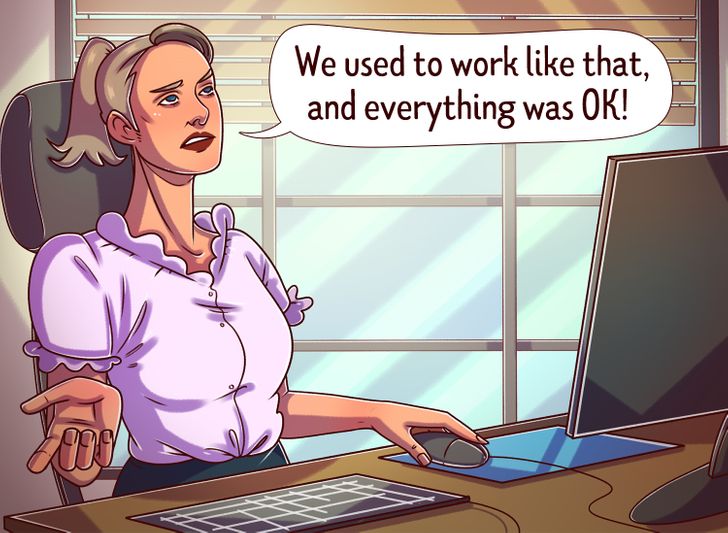
The Conservative is not necessarily negative in intent but can be a roadblock to innovation and progress. Their resistance to change can slow down team initiatives and hinder the adoption of new technologies or methods.
Characteristics and Impact
- Reluctance to Adapt: Conservative co-workers may stick to outdated methods, resisting the shift toward more efficient practices.
- Stifling Innovation: Their reluctance can create tension when new ideas are introduced, potentially derailing projects.
- Risk Aversion: While caution can be beneficial, an excessive fear of change can prevent necessary evolution within the company.
How to Handle the Conservative
- Encourage Gradual Change: Introduce new processes slowly, allowing time for adjustment.
- Provide Evidence: Share data and case studies that demonstrate the benefits of change to build trust.
- Foster Open Communication: Create an environment where concerns are addressed constructively, and ideas are shared openly.
For insights on overcoming resistance to change in the workplace, see articles on Harvard Business Review.
The Fed-up One: The Perpetually Complaining Colleague
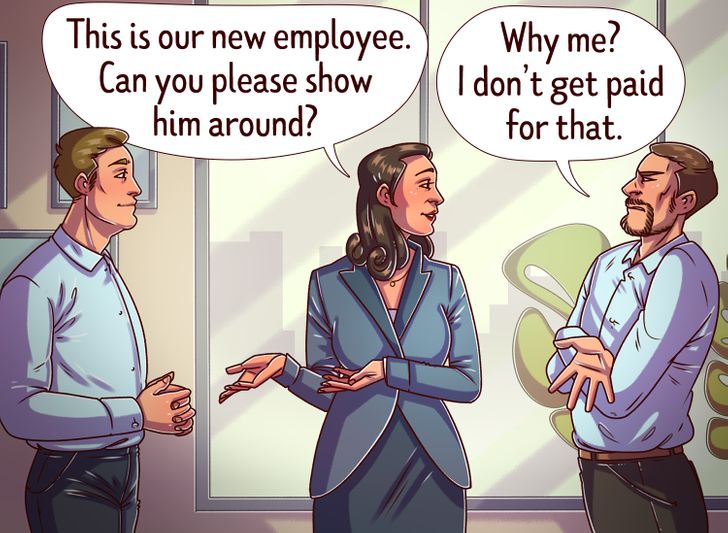
The Fed-up One is always in a state of dissatisfaction. Constant complaints, negative remarks, and a pessimistic outlook can dampen the mood of an entire team.
Characteristics and Impact
- Chronic Negativity: This co-worker finds fault in every situation, often focusing on problems rather than solutions.
- Lowers Morale: Their attitude can be contagious, leading to reduced morale and diminished productivity among team members.
- Creates a Toxic Environment: Over time, this negativity can breed a toxic workplace culture where constructive feedback is overshadowed by constant complaining.
How to Handle the Fed-up One
- Set Boundaries: Politely steer conversations toward positive or solution-oriented topics.
- Offer Support: Sometimes, persistent negativity stems from underlying issues—suggesting professional support or counseling might be beneficial.
- Limit Engagement: Avoid getting drawn into their pessimism by maintaining a positive and proactive work attitude.
For more strategies on boosting workplace morale, check out tips from Forbes.
The Smartest One: The Know-It-All That Brings Tension
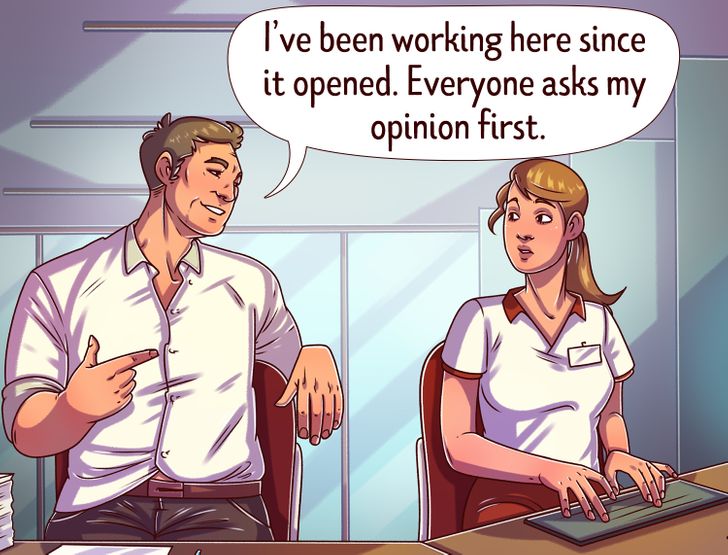
The Smartest One is the colleague who always has an answer, often at the expense of teamwork. While knowledge is power, excessive pride or a lack of humility can create friction in the workplace.
Characteristics and Impact
- Dominating Conversations: They often overshadow others during meetings, making it difficult for diverse ideas to surface.
- Ego-Centric Behavior: Their need to be right can hinder collaboration and breed resentment among team members.
- Stifled Innovation: When one person monopolizes discussions, it limits the creative input of others, potentially stifling innovation.
How to Handle the Smartest One
- Encourage Collaboration: Promote an environment where every team member feels valued and heard.
- Practice Active Listening: Encourage everyone to share ideas and establish ground rules for discussions.
- Provide Constructive Feedback: Approach the know-it-all with feedback on how their behavior affects team dynamics, possibly with the support of a manager.
For more insights on effective team collaboration, explore articles on Inc..
The Eternal Victim: The Co-Worker Who Always Plays the Blame Game
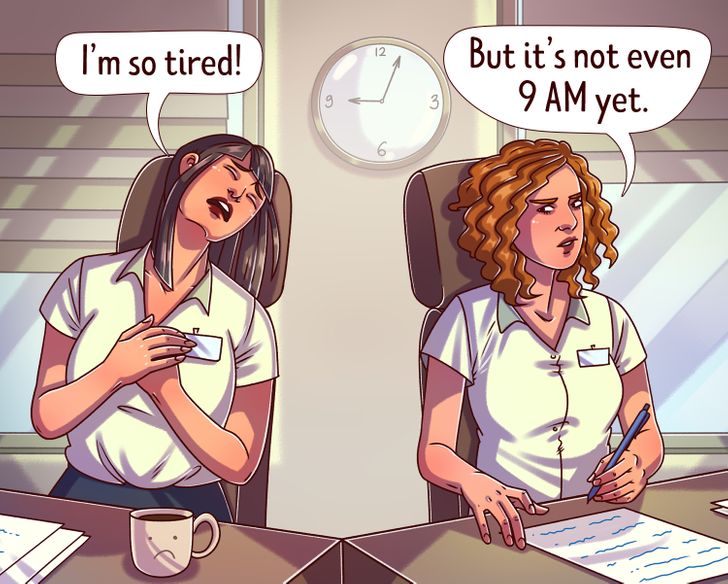
The Eternal Victim is the colleague who never takes responsibility and constantly blames external factors for their shortcomings. This attitude can create a culture of excuse-making and hinder personal and team growth.
Characteristics and Impact
- Blame-Shifting: They consistently avoid accountability, which can prevent learning from mistakes.
- Low Accountability: This behavior can lead to a lack of trust among team members and reduce overall accountability within the department.
- Negative Influence: The perpetual victim mindset can discourage proactive problem-solving and innovation.
How to Handle the Eternal Victim
- Encourage Accountability: Foster a culture of ownership where mistakes are seen as learning opportunities.
- Set Clear Expectations: Ensure that roles and responsibilities are well-defined to minimize excuses.
- Offer Constructive Solutions: Instead of focusing on blame, steer conversations toward actionable solutions.
For further reading on fostering accountability in the workplace, see resources from SHRM.
The Manipulator: The Master of Office Politics
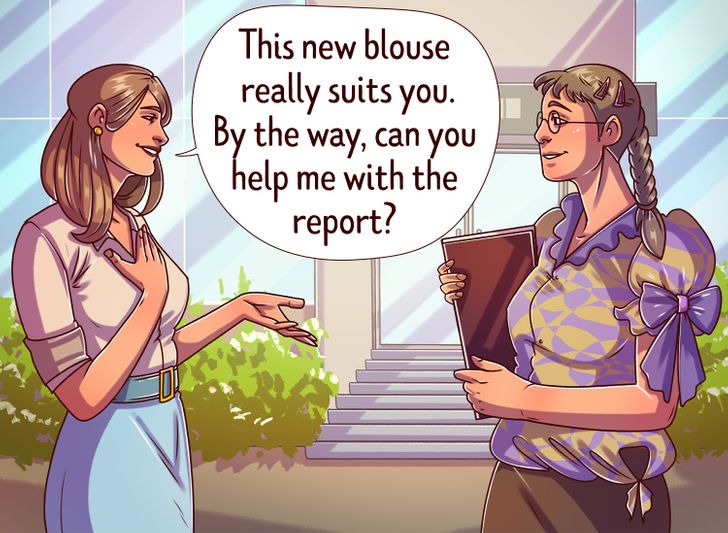
Manipulative co-workers use charm, deceit, or subtle coercion to control situations to their advantage. Their tactics can lead to a disruptive work environment and impact overall team cohesion.
Characteristics and Impact
- Subtle Coercion: Manipulators often use flattery, guilt-tripping, or strategic alliances to influence decisions.
- Undermining Trust: Their actions can create an atmosphere of suspicion and distrust, undermining the team’s unity.
- Self-Serving Behavior: Their primary focus is often personal gain, which can compromise the success of collaborative projects.
How to Handle the Manipulator
- Stay Objective: Focus on facts and clear data when engaging in discussions or decision-making processes.
- Establish Boundaries: Make it clear what behavior is acceptable and what isn’t.
- Involve Leadership: If manipulative behavior persists and affects team performance, it may be necessary to escalate the issue to management or HR.
For more strategies on dealing with office politics, consult articles on Forbes.
The Weather-Dependent Co-Worker: The Unpredictable Mood Swinger

The Weather-Dependent Co-Worker’s mood changes as frequently as the forecast. Their unpredictable nature can disrupt the workplace, as their energy and productivity seem to rise and fall with the weather.
Characteristics and Impact
- Mood Swings: Their performance and attitude can vary drastically, making it hard to plan or rely on consistent collaboration.
- Influence on Team Morale: These fluctuations can affect the overall mood of the team, especially if their negativity or exuberance is contagious.
- Challenges in Planning: Unpredictable behavior can complicate project planning and team coordination.
How to Handle the Weather-Dependent Co-Worker
- Flexible Planning: Account for potential fluctuations in performance by setting flexible deadlines or backup plans.
- Encourage Stability: Offer support that might help stabilize their mood, such as stress management techniques or professional counseling.
- Keep Communication Open: Regular check-ins can help identify underlying issues and provide opportunities for constructive feedback.
For further insights into managing mood swings in the workplace, you can explore resources on Psychology Today.
The Jester: The Clown Who Disrupts Productivity
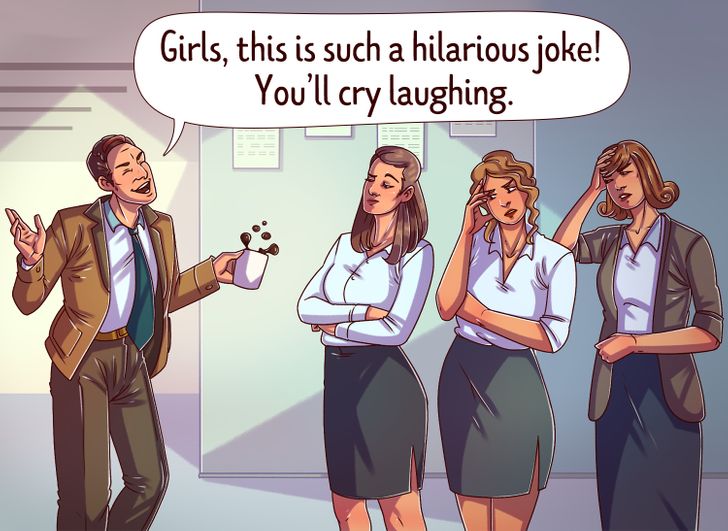
The Jester is the office comedian who may seem fun at first but can eventually cross the line from light-hearted humor to disruptive behavior. Their constant jokes and antics, while entertaining to some, can hinder focus and decrease overall productivity.
Characteristics and Impact
- Constant Distractions: The Jester often interrupts meetings and work sessions with off-topic humor, derailing important discussions.
- Diluted Professionalism: Over time, excessive humor can undermine the seriousness of projects and create an unprofessional environment.
- Mixed Reactions: While some colleagues might enjoy the levity, others may feel frustrated by the continuous disruptions.
How to Handle the Jester
- Establish Clear Boundaries: Politely but firmly communicate when it’s time to focus on work and when humor is appropriate.
- Channel Humor Positively: Encourage the Jester to contribute in ways that boost team morale without compromising productivity, such as organizing occasional team-building activities.
- Provide Feedback: If the humor becomes too disruptive, a constructive conversation about maintaining a professional work environment may be necessary.
For tips on balancing humor and professionalism, check out articles on Inc..
Conclusion: Building a Harmonious Workplace by Managing Annoying Co-Workers
Navigating the complexities of workplace dynamics can be challenging, especially when dealing with a variety of annoying co-worker types. From the schemer and manipulator to the eternal victim and unpredictable mood swingers, each personality has its own unique impact on team productivity and overall office morale. By understanding these personality traits and implementing practical management strategies, you can minimize disruptions and create a more harmonious work environment.
Adopting proactive communication, setting clear boundaries, and encouraging a culture of accountability are key steps toward mitigating the negative effects of toxic behavior. Whether you are a manager looking to improve team performance or an individual striving to maintain your sanity in a challenging work setting, recognizing and addressing these disruptive behaviors is essential for long-term success.
For additional insights on effective team management and boosting workplace productivity, be sure to explore resources from Harvard Business Review and SHRM. These platforms offer expert advice, case studies, and actionable strategies to foster a more positive and productive office culture.
Ultimately, while you might not be able to change every co-worker’s behavior, you can control your environment and develop strategies to thrive despite the challenges. Focus on building strong professional relationships, invest in your personal development, and remember that a well-managed workplace is one where everyone contributes to mutual success.









Leave a Reply